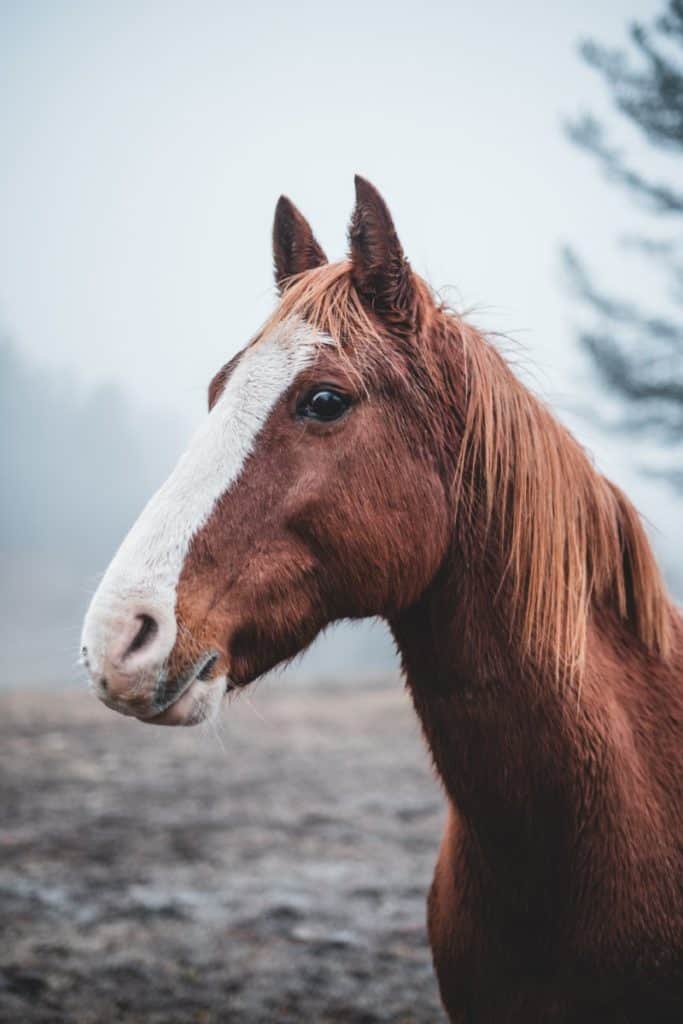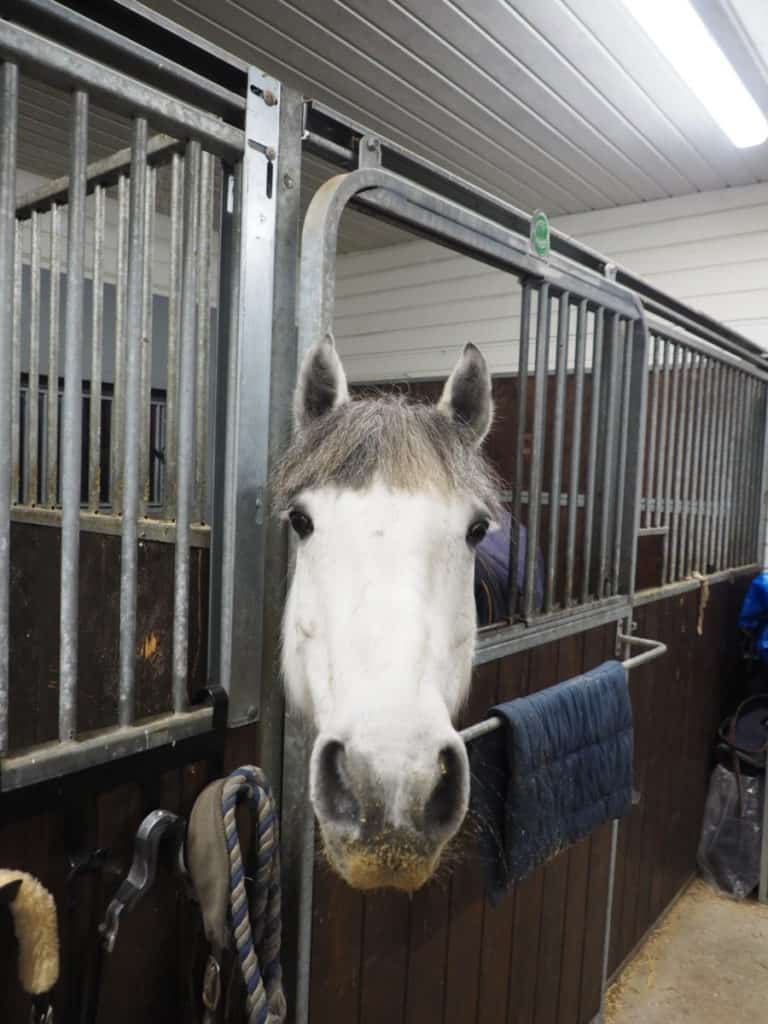
I think we can all agree – horses are incredible animals. But sometimes we can forget that that’s exactly what they are – animals. And as creatures with primal instincts and a different sensory experience to us, it is important that we try to understand the world from their perspective and adapt our behavior so that we can interact with them in a way that is harmonious, and not to mention safe.
Read on for our top tips on how to best live in harmony with your equine partner.
So how should you behave around a horse? Horses are prey animals, so their natural instinct is to flee from perceived danger. Sudden sounds and unexpected sights can spook them, so it is important to make your presence known and to avoid the horse’s blind spots when approaching. Horses can also sense a person’s mood, so if you are calm and balanced, the chances of your horse being calm are much greater.
There are many rules out there about what you should and shouldn’t do around horses, such as not walk behind them, or walk up to them from behind, but in this article, we are taking a more high-level approach and looking at how we can establish better behavioral habits around the horses in our lives.
How to Behave in and Around the Barn
The barn or stable is where the horses live – it’s their home and familiar space. It is important that we help make it an environment that allows them to relax and feel safe. Achieving this extends beyond just the physical aspects of a clean and safe environment, as the atmosphere between people in the stables can also have an effect on the psychological well-being of horses.
Horses are socially intelligent beings and science show that they can recognize our emotions and even recall them (source).
#1 Maintain a clean and tidy stable
A clean and organized stable can help keep pests and diseases away. Horse food scraps and treats, as well as garbage, can attract rats, cockroaches, and other undesirable visitors. A cleared hallway and yard also make for a safer environment reducing tripping hazards as well as the potential for spooking nervous horses.
#2 Create a calm and positive atmosphere
Research shows that horses can recognize facial expressions in humans and understand when they are upset or happy.
When we are around horses in the stable, we become part of their herd and horses relax when the other members of their herd are relaxed, as this signals the absence of danger. So how we interact with both animals and humans in a stable environment will ultimately have an effect on the mental well-being of the horses.
For this reason, knowing how to recognize and connect with your own emotions and emotional state is very important. This can be said for most areas of our lives, but especially so when around horses and other animals that are sensitive to our moods.
#3 Use a friendly tone of voice
Horses’ sensitivity to sound is about the same as for humans, however, studies have shown that horses can react negatively to angry or upset voices. If life gives you lemons, try making some lemonade and drink it before going to the stables.
How to Behave With and Around the Horse
#4 Pay attention to the mood of the horse and the tension in its body
This tip really applies anytime you handle a horse, whether it is in or out of the saddle. A horse’s autonomic nervous system is divided into two branches and their tension levels are constantly moving on a spectrum between sympathetic arousal and parasympathetic deactivation (source). When a horse is in a sympathetic state, he is tense and in flight mode to avoid perceived danger. When a horse is parasympathetic, he is calm and balanced, such as when grazing in a field or relaxing in his stall.
It is important for anyone handling a horse to be able to identify where the horse is on this spectrum and adapt their actions accordingly. For instance, you should not walk behind a horse in a sympathetic state however, you can place your hand on the horse’s bum and pass behind him if he is in a parasympathetic state.
Below is a great video from CRK Training explaining this concept in more detail.
#5 Be a confident and fair leader
While we all want to connect with our horse and be its friend, it’s important to remember that you should also be the pack leader (in your pack of two). A horse that does not respect you is a potential danger to yourself and others. Similarly, a horse that does not trust you will be on constant alert in your presence, making the process of building a relationship nearly impossible. Building respect and trust is a process and requires conscious effort and a good dose of patience.
#6 Pay attention to body language

One of the ways we can understand how to adapt our behavior around horses is by reading cues from their body language. For a novice rider without much prior experience, this can be difficult if not impossible, which is why they should always follow general ‘safety rules’ for horse handling.
However, more experienced equestrians will after some time develop a ‘gut feeling’ for what kind of mood a horse is in by being receptive to the way it moves, reacts and communicates. For instance, a horse that lifts its tail and loudly blows air out of its nostrils could be very excited and energetic but could also be scared or anxious. It takes experience to be able to distinguish cues and signals like these and adjust accordingly.
While it is important to observe the horse’s body language to read different situations you may encounter with your horse, being aware of your own is also key. Science suggests that a horse picks up on your body posture and weight distribution as signals for how confident and assertive you are. So whenever asking your horse to perform a movement or task, try to match the request with appropriate non-verbal cues.
#7 Always let the horse know where you are
Sneaking up on a horse is never a good idea, and if you don’t know why, this article tells you all there is to know about how to correctly approach a horse.
When walking up to a horse, make sure to use your voice to allow it to keep track of where you are at all times as you may be outside its field of vision and thus in danger of startling it. This is also the case when grooming and mounting so utilizing your voice is a great way to maintain contact with a horse.
Touch is another way to let your horse know where you are and in what direction you are moving. Whenever passing behind a horse (after carefully observing its body language to make sure he is relaxed), hold a hand on its rump while passing by so he can know exactly where you are.
#8 Horses have their own personalities

Just like humans, horses have personal traits and quirks. Some may hate having people in their stall, so they need to be put in cross ropes for grooming. Others may be frightened by the feeding bucket that they see every day, but forget about the danger as soon as the muzzle hits the feed. But discovering a horse’s personality is all part of making friends and building a relationship, just like it is for humans, and frustrating as it sometimes may be, that’s part of the fun!
This article is accurate and true to the best of the author’s knowledge. It is not meant to substitute diagnosis, prognosis, treatment or any type of medical advice for humans or horses. Animals exhibiting signs and symptoms of distress should be seen by a veterinarian immediately.


